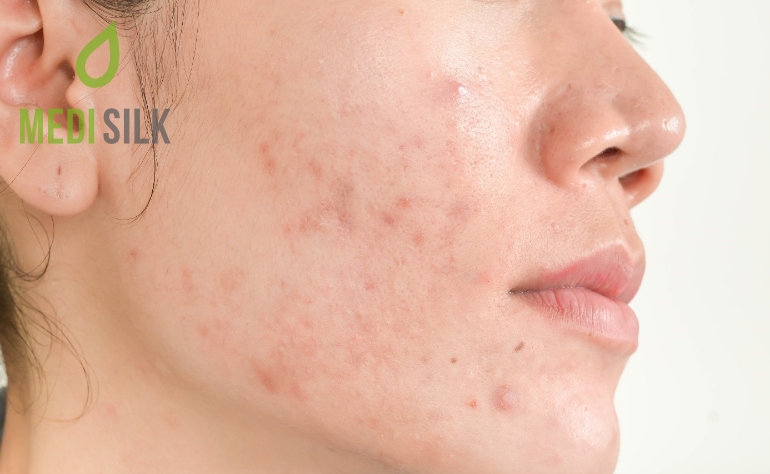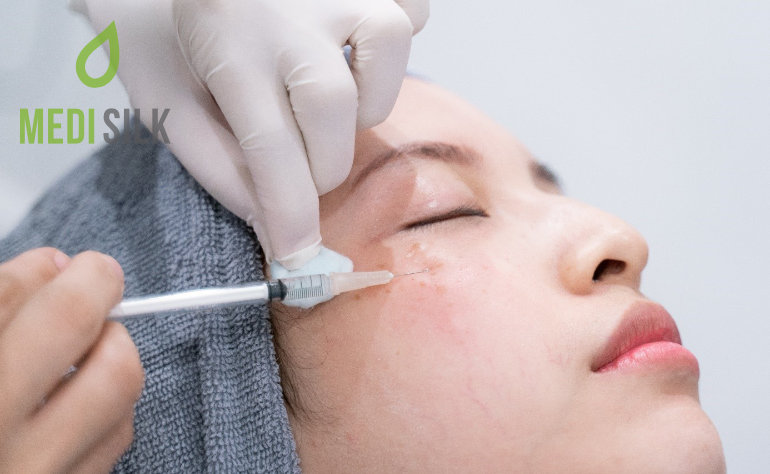Skin treatments with professional-grade soft-tissue fillers may be the second most popular minimally invasive cosmetic procedure in the United States (Botulinum injections being the first) but, despite that impressive fact, there are still many misconceptions related to their application, effects, and properties. For example, many patients wrongly believe that they can be only used to remove wrinkles or to plump lips when these products can also offer long-lasting and fast results in the correction of the nose, jawline contouring, facial sculpting, enlarged pore reduction… and even for the effective treatment of acne scars. The latter of these procedures has managed to gain a big momentum in the past two or three years. That is because quality dermal fillers for acne scars offer patients many benefits such as:
- Limited or even no downtime
- Instant results
- Continuous improvement in the months following the treatment
- Increase in collagen production in the skin
- Painless and fast procedure
- Durable effects
Therefore, it can be said that these innovative cosmetic rejuvenation products fare well against other acne scar treatments like laser peeling, dermabrasion, and even corrective surgery. But in order for an acne patient to enjoy all of these advantages, several other factors also need to be taken into consideration.
What you need to know about dermal fillers for acne scars
Every patient, acne scarring and skin filler is different. Because of that, it cannot be said that this low-risk beauty procedure can act as a universal solution for this specific aesthetic problem. Any board-certified plastic surgeon or a professionally trained aesthetic dermatologist knows that each case of acne has to be treated in a unique a special way for results to be visible, long-lasting and positive.
Not all acne scars can be corrected with filler injections
Scars caused by acne come in various shapes and sizes. Some of them are indented into the skin, while others form raised above the skin. Because of that, top-notch filler injection can only be used for the management of superficial boxcar scars, shallow to medium hypertrophic scarring and rolling acne marks. Unfortunately, this form of treatment will not offer considerable improvement for people who are dealing with severe scarring (e.g. ice pick).
Table: Main types of acne scarring
| Acne Scarring Type | Characteristics | Top treatment options |
| Ice pick | Very severe and that makes it very difficult to treat at home and even with a minimally invasive cosmetic procedure. This is the deepest category of acne scarring.
|
Dermabrasion
Grafting Laser therapy Surgery |
| Boxcar | Looks like chicken pox scars or a shallower version of the ice pick ones. | Laser resurfacing
Surgery Dermabrasion Punch grafting |
| Atrophic | Indented in the skin. | Filler injections
Laser peeing Dermabrasion Skin needling |
| Rolling | Makes skin appear “wavy” as it forms uneven edges and slopes on it. | Dermal fillers
Dermabrasion Laser therapy Skin needling |
| Hypertrophic | Raised, wide and thick. Can be caused not only by acne but also from cuts, burns, piercings, etc. | Soft-tissue fillers
Cryotherapy Steroid injections Steroid products for topical use Surgery |
Not all acne patients make good filler treatment candidates
The greatest thing about soft-tissue fillers is that they are not associated with any severe, harmful or long-lasting adverse effects. Typically, the unwanted results after a procedure with such as an innovative cosmetic product are limited only to redness, itching, swelling, bruising, tenderness and sensitivity around the injection points and those symptoms are usually caused not by the implant gel but by the needles and the injection procedure. Despite its mild nature, this non-surgical therapy is generally not recommended to people who are hypersensitive or allergic to some of the ingredients in these products. Pregnant and breastfeeding women also do not make good candidates for any type of dermal filler injection. Last, but not least, acne patients who have an ongoing case of acne that has inflamed their skin should also consider opting for other treatment options.

Some filler gels are more suitable than others
Brand-wise the best dermal fillers for acne scars are those made by Restylane, Radiesse, Belotero, Sculptra, and Juvederm. All of these product ranges are known for their exceptional quality, unmatched durability, and proven safety. Although some of those line-ups are made up of 5-6 or even more reliable filler injections, it is usually just one of them that can be used for the non-surgical treatment of acne marks. The two most popular Hyaluronic Acid fillers, Restylane and Juvederm, have impressive hydrating properties thanks to their HA-based formula. But that same active ingredient dissolves faster in the soft tissue compared to Calcium Hydroxylapatite or Poly-L-lactic Acid, for instance. Plus, their soft gel texture has a more limited filling effect making them suitable only for the treatment of small and mild scars. Still, if you want to avoid exposing yourself to various side effects, sticking to Hyaluronic Acid options is the best thing you can do. A few of them, including Belotero Balance with Lidocaine, can fill even moderate acne scars.
Deeper and more indented markings can be successfully corrected with semi-permanent CaHA filler Radiesse. It can be injected into the lower subcutaneous layer and thanks to its CaHA particles, it will stimulate the skin to produce more collagen. This and the fact that it has a longevity of about 18 months make it a great solution for such severe aesthetic issues.

If long-lasting results are what you are looking for, you can undergo treatment with Poly-L-lactic acid or even Polymethylmethacrylate skin fillers. They have a duration of 2-3 and 5 years respectively and can reduce the appearance of severe scars in a matter of minutes. Experienced cosmetic surgeons prefer to rely on Sculptra for their most challenging scarring cases because it is an FDA-approved PLLA filler and it does not contain animal-based ingredients making it very safe to use.
Even the most advanced and patient-friendly cosmetic product will fail to deliver the wanted results if it is not in the hands of a qualified and vetted plastic surgeon. Treating acne scars with dermal fillers requires an array of skills, extensive professional knowledge, and a steady hand.
So, to enjoy the impressive properties of health-friendly dermal fillers for acne scars, you need a combination that features a quality filler injection, a skilled medical expert and shallow and mild scarring. That will guarantee you optimum treatment results.


 Blog Feed
Blog Feed


